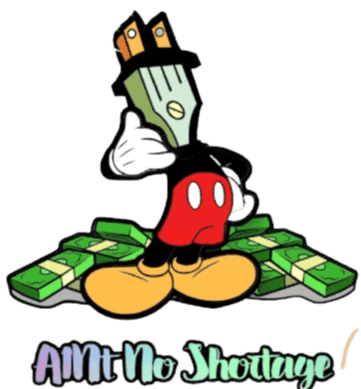Latest Posts

From Streets to Runway: The Evolution of Hip Hop Fashion
Posted on: November 14, 2021
The inception of Hip Hop Fashion: Late ‘70s to Mid ‘80s
With the commercial rise of rap music in the mid-70s, hip-hop fashion followed the same trajectory and became a cultural phenomenon. The nascent stages of hip-hop fashion were all about baggy jeans, oversized t-shirts, baseball caps, and chunky sneakers. It was only during the late 1970s that brands such as Adidas and Pro-Keds were established, and they attached themselves to the emerging hip-hop scene.
This landscape saw a slight shift in its course during the early 80s, which emerged on the East Coast. It consisted of Kangol bucket hats, chunky street-tuff gold chains and name-plate necklaces, shell-toe trainers with ‘phat’ laces, and black (sometimes leather) tracksuit tops. In fact, it was during this time luxury fashion brands such as Louis Vuitton, Fendi, Gucci began to venture into the socio-cultural domain of hip hop.
Revolutionizing The Fashion Industry: Late ‘80s to Early ‘90s
The late 1980s were all about African nationalism, and fashion reflected traditional African influences. Colors such as red, black, and green became popular in hip-hop apparel, in addition to protective hairstyles such as box braids.
In fact, rappers like M.C Hammer and Fezzes flaunted blousy pants, African chains, and dreadlocks. In fact, the most influential collaborations of all time happened in 1984, that is when Nike collaborated with Michael Jordan to create the well-known basketball shoes Air Jordans. By the 1990s, the Afro-American influences started entering the domain of the hip-hop clothing industry. Bright colors, oversized pants, and headwear were the elements — were trends that reigned this period.
Pivoting the Urban Influence: Mid ‘90s to Present
The mid-90s were all about bling and extravagant clothes, which were primarily popularised by icons like Snoop Dogg and Notorious B.I.G. As the hip-hop music industry boomed, artists began to move towards luxury consumption, in part as a status symbol and in part to challenge fashion’s racial status quo. High fashion brands such as Tommy Hilfiger pursued hip hop in their fashion trends, expanding its commercial appeal.Though luxury fashion and hip-hop remained separate since the genre’s inception, rappers’ increasingly flashy logos dismantled racial stereotypes associated with high fashion and catalyzed the first wave of logo-mania in fashion.
Original article: https://www.birthofhiphop.com/from-streets-to-runway-the-evolution-of-hip-hop-fashion/
Get in Touch
Questions?
We'll get back to you in no time!
